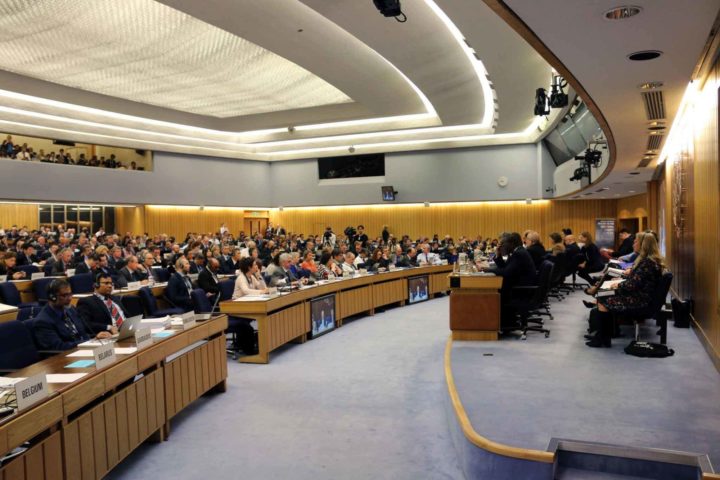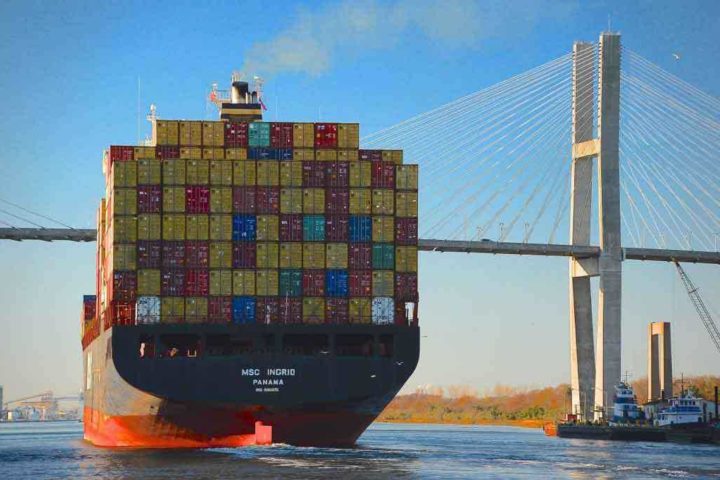Shipping’s landmark climate deal heralds zero-carbon trade - what's in it for UK?
IMO agreement was the most significant climate agreement of the year, says Ned Molloy
By George Smeeton
Share
Last updated:
You may have missed it, but last month the most significant climate agreement of the year happened in Lambeth, on the banks of the Thames.
On Friday April 13 the UN’s International Maritime Organisation (IMO) adopted an initial strategy to reduce greenhouse gas emissions from global shipping, by “at least” 50% by 2050, from 2008 levels.

Getting here was a long, hard slog; the organisation was initially tasked with addressing greenhouse gas emissions 21 years ago under the 1997 Kyoto Protocol. Through that time shipping GHG emissions mostly rose, and are currently between 2% and 3% of the world’s total, comparable to Germany.
With no deal, on a business as usual scenario they were projected to increase by up to 250% by 2050, putting the world at even greater risk of a destabilised climate system.
With the IMO agreement however, the sector has decisively changed course. The minimum impact of the IMO deal between now and 2050 is the prevention of 15 gigatonnes of cumulative CO2 emissions, approximately equivalent to stopping 116 coal plants from operating for the next 30 years.
While this minimum pathway does not bring shipping in line with a 1.5 degree C pathway, the “at least” wording in the text, and explicit reference to a “CO2 pathway compatible with the Paris Agreement” kept on board the Pacific Islands and European countries, who support a decarbonisation range up to 100%. They and others will be pushing for this interpretation of “at least 50%” through the next few years.
The adoption of short term measures such as speed adjustments and tougher efficiency standards, at the IMO's next Marine Environment Protection Committee (MEPC) meeting in October, will be crucial to start putting the agreement in practice.
Wider implications
Stepping back from the details, the support of the IMO deal by China - the largest exporter of goods in the world - is hugely significant. The deal heralds the decarbonization of global trade, 80% of the volume of which is carried by shipping, by mid-century. In practice this means a reduced carbon footprint of nearly every imported and manufactured product in the world, from bananas to beds, soybeans to smartphones.

China is also the largest shipbuilder in the world, followed by Japan and Korea, and the support of each of these countries for the IMO’s ambitious outright decarbonization target implies confidence that they can maintain leadership in the shipbuilding market through this transition, and indeed profit from it.
Due to the long lifetime of commercial vessels, from 25 to 30 years, most vessels built through the 2030s will have to be zero-emission in order to meet the IMO’s target.
Therefore the race is on to improve and commercialise existing technology in hydrogen and related fuel types such as ammonia, which can be manufactured using renewable electricity.
The IMO agreement doesn’t just give a strong incentive for research and development into zero-emission technology; it also brings tangible financial risks to parts of the sector that fail to make progress. The IMO’s global fuel consumption database will likely be kept anonymous due to industry pressure, but the EU’s equivalent monitoring, reporting, and verification (MRV) system starting this year has no such restrictions, and will gradually make it possible for investors and charterers to make decisions based on the efficiency of individual vessels.
Better data transparency on vessel emissions from the EU’s MRV, as well as from satellite technology such as the Sentinel 5P's Tropomi instrument commissioned in April, could channel money into the most efficient parts of the fleet, and away from the most polluting.
The “stranded assets” and “carbon risk” concepts, commonly applied to upstream coal and oil projects, are increasingly being adopted by banks funding the shipping industry.
British opportunities
What does all this mean for the UK? Brittania may no longer rule the waves in terms of being a great shipbuilder, or in having any big shipping lines left. However, tougher emissions standards for global shipping could be a shot in the arm for shipbuilders from Hull to the Clyde, who can compete on quality, not price, with the mega-yards of Asia. The UK is also home to expertise in modern wind-assisted technology - a world away from its 18th century predecessors - which could take a large chunk out of the sector's emissions, and fuel bills, if financing and risk is handled smartly.

London still hosts one of the biggest insurance and reinsurance hubs for the maritime sector; the City will have to deal with both the costs of increased storm and flood damage to shipping and port infrastructure, as well as the opportunities of a global sector in energy transition. And at University College London, the UK has some of the leading “green maritime” academics in the world.
But what’s lacking is an overarching vision from government to bring this all together. As Guy Platten, CEO of the UK chamber of shipping pointed out in a blog post for The Spectator, last year the UK Government put £250 million of investment into battery research and development, but targeted almost entirely at road vehicles. Funding going into zero-carbon fuels for the shipping industry? Zero. Ironic for the country that hosted the landmark IMO agreement, and indeed played a diplomatic role in its achievement.
As Mr Platten says, “…if the future vision includes having virtually every ship in the world using zero-carbon energy sources, then the country that pioneers this game-changing technology will be the country that reaps the economic benefits.”
Final thoughts: short-haul and inland shipping is in many ways the testing ground for technologies before they can be adopted by ocean going vessels. Batteries are already in use for short-haul shipping; Norway has three fully electric ferries in operation carrying cars and passengers, and by 2023 the country’s whole ferry fleet will either be electric or, for the longer routes, hybrid. The UK should set a similar goal.
On current technology, electric ferries can already travel over 20 nautical miles on a single 20-minute charge – enough to cross the English Channel and the Irish Sea at their narrowest points.
Sea passenger traffic to and from the UK has fallen to its lowest level in 30 years, decimated by aviation, which has no technological routes to zero carbon available for at least a decade. Silent, clean electric ferries are a wonderful experience, and could win back this lost ground, decarbonising our holidays and city breaks in the process.
Share